When you think of waders, you may first think of long-legged and long-billed birds gracefully picking their way across our wetlands and coasts and probing into mud and sand for a meal. However, the small, stout waders scampering along the shoreline are just as fascinating. And I find one stocky wader that visits the UK particularly interesting to watch. It is at home stepping out along the promenade in search of dropped crumbs as well as fluttering along a stony beach. It’s the weightlifting wonder – the turnstone.
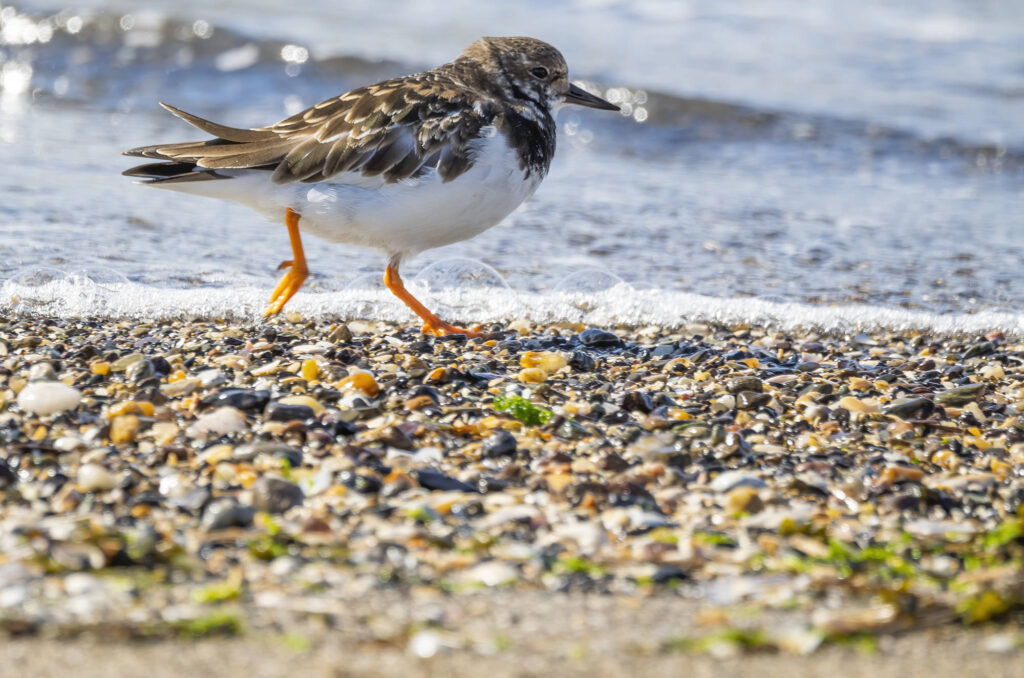
One man’s trash is a turnstone’s treasure
Turnstones get their name from the method they use to find their prey. Unsurprisingly, this involves flipping over large stones on rocky or gravelly shores to see if anything is hiding beneath. Their sturdy build and short, strong bill allow them to lift rocks as big as they are when looking for something edible, such as small invertebrates. However, a turnstone’s definition of what is edible is pretty broad. They have been documented eating bird’s eggs, chips, bars of soap, packets of artificial sweetener and even decomposing corpses. Their Latin name – Arenaria interpres – means ‘sand dwelling treasure hunter’. A turnstone’s idea of treasure is clearly a bit different to mine.
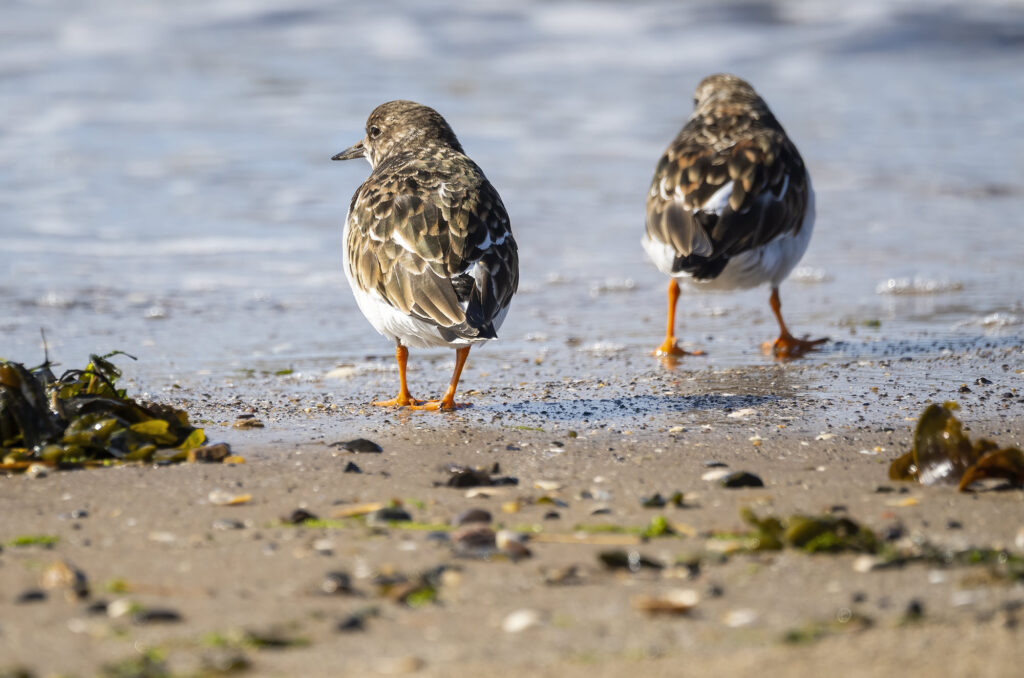
A chequered flock
The turnstone is mainly a winter visitor to the UK, as it breeds in the Arctic, but you can spot it throughout the year in coastal habitats. This overlap is due to birds from northern Europe passing through in summer and again in spring, and birds from Canada and Greenland arriving in early autumn and leaving in early summer.
It’s worth bearing this in mind when identifying these birds. Their plumage changes from dark brown above, with a black pattern on the face and breast, a white chin and white belly to a colourful, chestnut- and black-chequered pattern on the back in summer. In the image below, the shift from winter to summer plumage on this bird has begun. When they fly, Turnstones show a white patch on the back, broad, white wing bars, and white patches at the base of the tail.
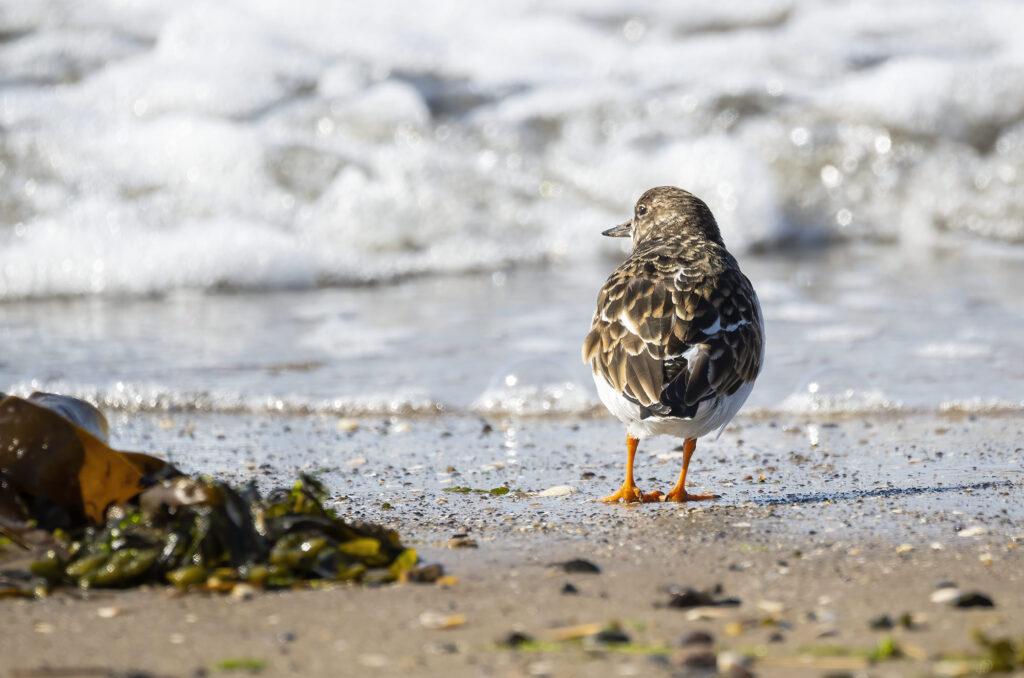
Turning your lens to turnstones
Sitting on the shore is the best way to photograph turnstones. When feeding, they spend long periods with their legs bent and heads lowered, poking between stones and seaweed. So, as with many wildlife encounters, getting as low as possible is best for capturing images of feeding behaviour. If you remain still, you may find they wander quite close while absorbed in the task of rooting around for food. Their way of picking through wracks of seaweed has earned them the name ‘Tanglepicker’ in Norfolk, which I love.
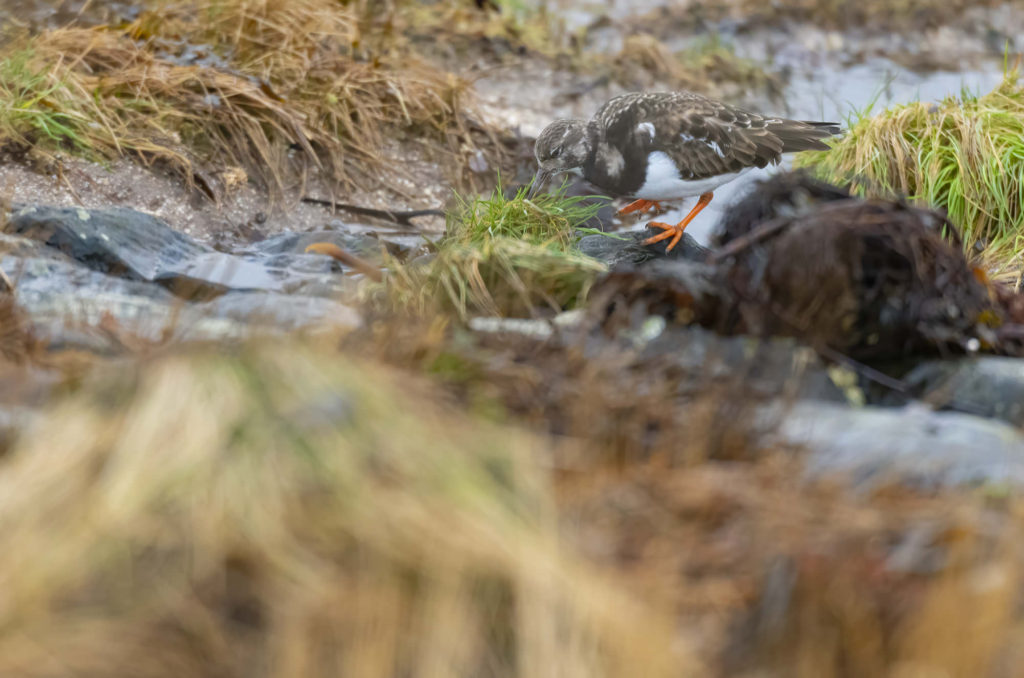
Photographing flocks of these birds highlights the striking patterns on their plumage. If you are lucky, you will get to capture other species hanging out with them, like the dunlin pictured below.
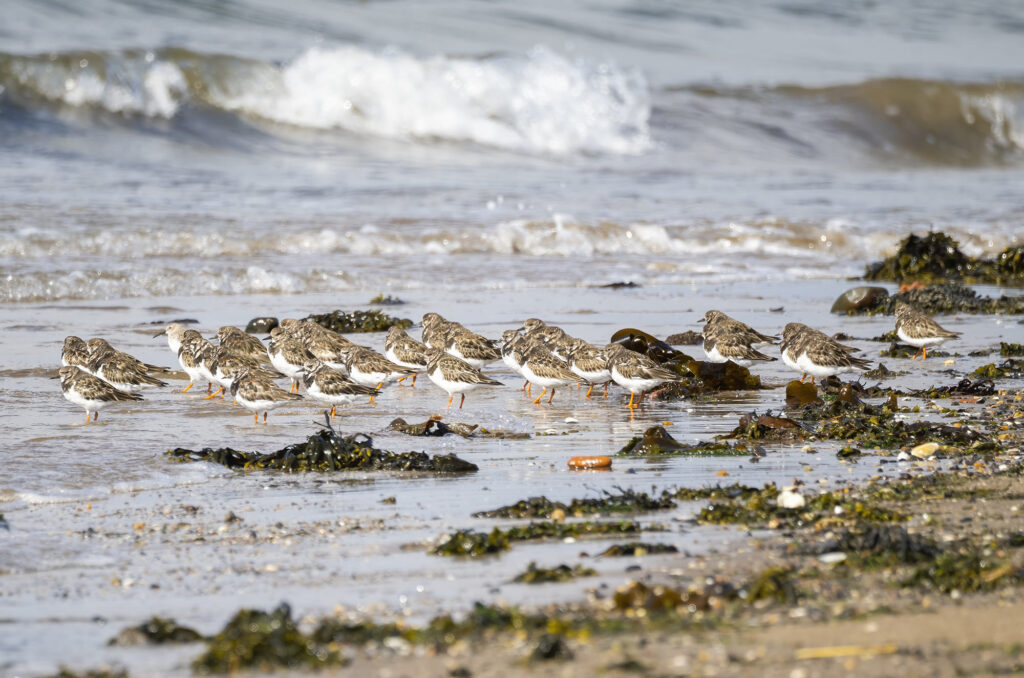
As with most flocks of waders, it is worth experimenting with different shutter speeds when these birds move together. In the image below, I captured a small amount of motion blur as the flock swept above the water.
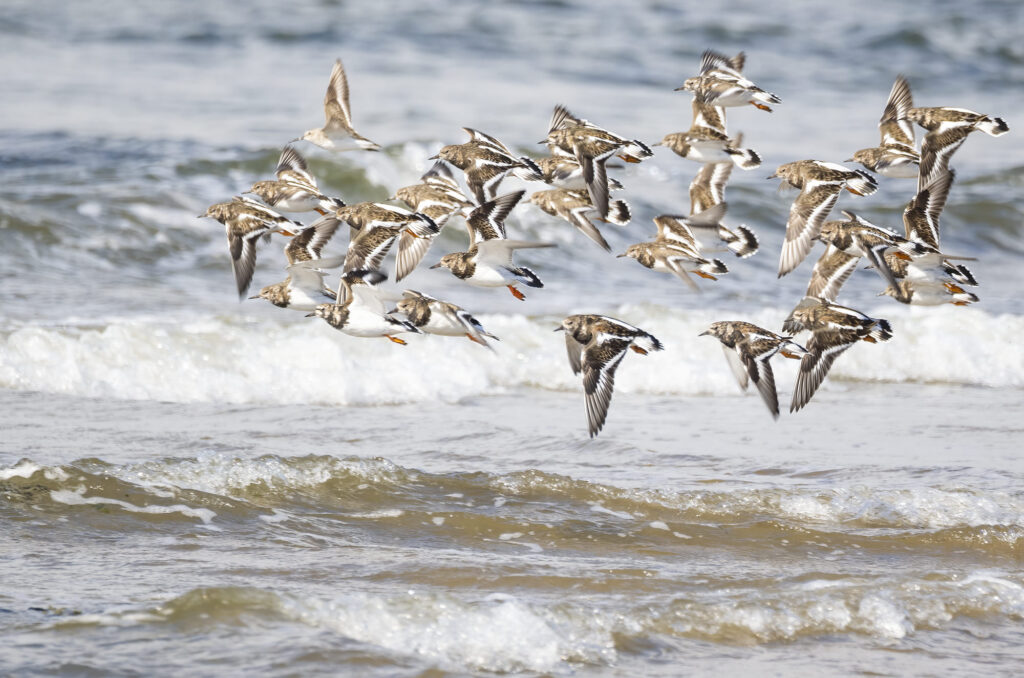
Let’s face it, the turnstone is a flipping fascinating, and photogenic, little wader.

